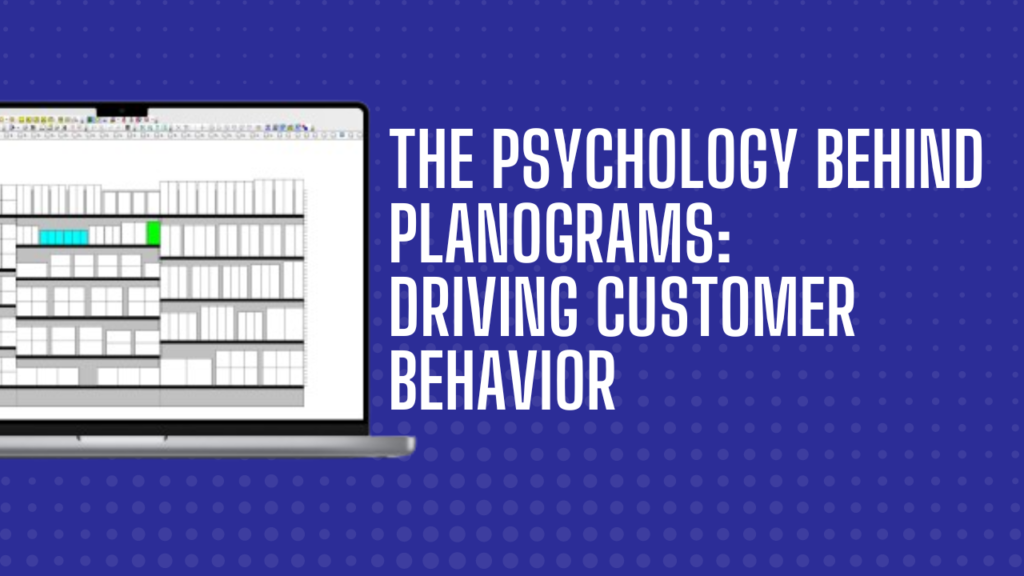The Psychology Behind Planograms: Driving Customer Behavior

In the world of retail, understanding customer behavior is crucial to driving sales and enhancing the shopping experience. One of the most powerful tools retailers have at their disposal to influence this behavior are planograms. A planogram is more than just a visual blueprint for product placement; it’s a strategic tool rooted in psychology that can significantly impact how customers interact with products, navigate store aisles, and ultimately make purchasing decisions.

1. The Science of Eye Level
One of the fundamental principles behind effective planogram design is the concept of eye-level placement. Products positioned at eye level are the first to capture a shopper’s attention, making them more likely to be noticed and purchased. This placement leverages the natural tendency of customers to scan shelves from top to bottom. Retailers often place high-margin or best-selling items at eye level to maximize their visibility and increase sales. The psychology here is simple: what customers see first, they are more likely to buy.
2. The Power of Product Grouping
Another psychological principle at play in planograms is the power of product grouping. When related items are placed together, it creates a sense of convenience and encourages customers to purchase multiple items at once. For example, placing pasta, sauce, and Parmesan cheese in close proximity creates a one-stop shop for a complete meal. This strategic grouping taps into the psychology of convenience, making it easier for customers to make decisions and increasing the likelihood of impulse purchases.
3. Color and Contrast
Color plays a significant role in capturing attention and influencing mood. Planograms often utilize color contrasts to draw attention to specific products. Bright, bold colors can create a focal point on a shelf, making a product stand out among its competitors. Additionally, the use of consistent color schemes can reinforce brand identity and help customers quickly locate their preferred products. By understanding the psychology of color, retailers can design planograms that not only catch the eye but also evoke the desired emotional response from customers.
4. The Impact of Shelf Position
The positioning of products on different shelf levels also plays a crucial role in driving customer behavior. Items placed on lower shelves are often targeted towards children, as they are at eye level for younger shoppers. This placement can drive impulse purchases by appealing directly to a specific demographic. Conversely, higher shelves are typically reserved for premium or niche products, creating a sense of exclusivity. The psychology here is about accessibility—making products easy to reach and appealing to specific customer segments based on their location in the store.

5. The Role of Signage and Labels
Signage and labels within a planogram serve as psychological cues that guide customers through the shopping experience. Clear, well-placed signs can highlight promotions, discounts, or new products, directing customer attention to specific areas of the store. Labels that emphasize benefits, such as “organic,” “low-fat,” or “new arrival,” can influence purchasing decisions by appealing to the shopper’s desires or needs. Effective signage taps into the psychology of decision-making, reducing the cognitive load on customers and making the shopping experience more efficient.
6. Creating a Journey Through the Store
A well-designed planogram does more than just organize products; it creates a journey through the store that can influence how long customers spend shopping and how much they buy. By strategically placing high-demand items at the back of the store, retailers can guide customers through various aisles, increasing the chances of impulse purchases along the way. This journey leverages the psychology of exploration, encouraging customers to discover new products they might not have considered. The layout of the store and the flow created by the planogram can significantly impact the overall shopping experience and sales volume.
7. Leveraging Social Proof and Brand Loyalty
Planograms can also be designed to leverage the psychology of social proof and brand loyalty. Products that are popular or endorsed by celebrities, influencers, or customer reviews can be given prominent placement to reinforce their popularity and credibility. Additionally, loyal customers often seek out their preferred brands, so placing these brands in easily accessible locations can enhance the customer experience and drive repeat purchases. By understanding and catering to these psychological triggers, retailers can build stronger connections with their customers and encourage brand loyalty.
The psychology behind planograms is a powerful force in retail, influencing how customers navigate stores, interact with products, and make purchasing decisions. By understanding and applying these psychological principles, retailers can create effective planograms that not only optimize product placement but also drive customer behavior in ways that enhance sales and customer satisfaction. Analyticsmart’s advanced planogram solutions empower retailers to harness these insights, enabling them to design store layouts that resonate with customers on a deeper psychological level, ultimately leading to increased sales and a more satisfying shopping experience.
Have A Question?
Learn how Analyticsmart can elevate your retail performance with data-driven insights and customized solutions.
Contact Sales
Have a question or comment? Submit your message through our contact form and a member of our team will get back to you within 24 hours.
Marketing Head | Analyticsmart
Unlock Your Retail Potential With Us



